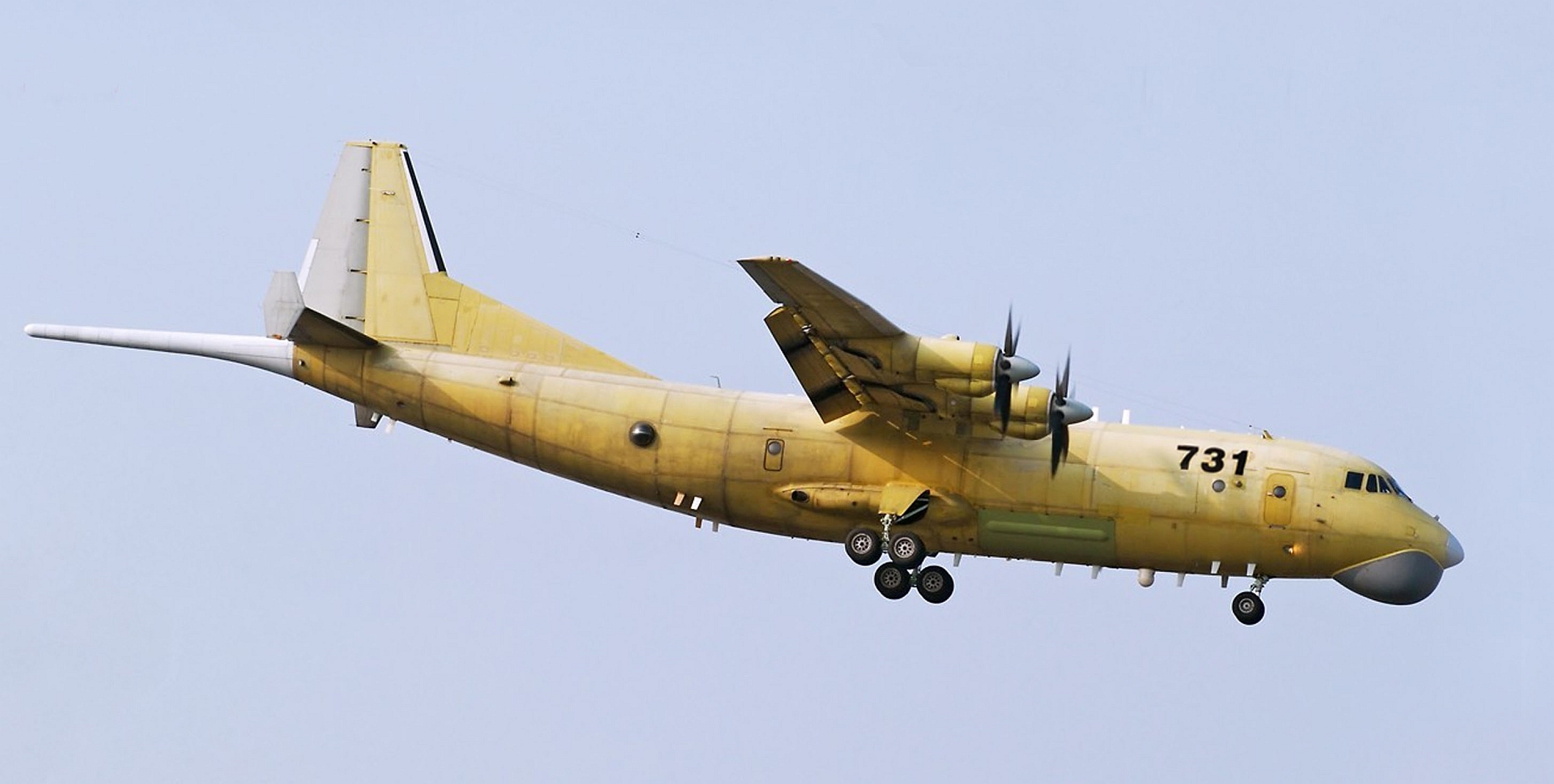


China is making serious efforts to correct its longstanding deficiency in aerial Anti-Submarine Warfare (ASW), introducing the Shaanxi Y-8Q (also designated as the Y-8GX6) aircraft painted in the blue-gray People’s Liberation Army Navy Air Force (PLANAF) colors into operation. Previously, two Y-8Q prototypes had been flying for the past several years as part of a rigorous testing and training regimen. Until this month, China’s only long-range aerial ASW capability came from three Harbin SH-5 seaplanes, which are nearly thirty years old.
The Y-8Q is designed to overcome Chinese ASW deficiencies that would cripple Chinese naval and civilian maritime activity in war. Some of its technology, at least on the surface, compares favorably to the U.S. P-3C Orion and P-8 Poseidon, and the Japanese P-1. The Y-8Q’s most distinctive feature is its seven-meter-long Magnetic Anomaly Detector (MAD) boom, which detects the magnetic signature of enemy submarines’ metal hulls as the Y-8Q flies over them. Since MAD performance correlates to size, and it’s seven-meter MAD boom is arguably the largest of its kind among airplanes, the PLAN would have a fine weapon for hunting otherwise stealthy submarines.
The Y-8Q also has an electro-optical turret forward of its bomb bay, which has day, night and infrared cameras to hunt the heat signatures and wakes of small watercraft, unmanned vehicles, and submarines (especially snorkels and periscopes). Right under cockpit is a large radome that, in addition to detecting submarine periscopes and wakes, can provide targeting data via satellite link to Chinese aircraft and warships when the Y-8Q finds enemy warships. The Y-8Q can also drop a hundred sonobuoys to provide real time sonar coverage of seawater expanses.


The exact weapons capacity of the plane’s internal bomb bay is not yet public, but one estimate is that the Y-8Q can carry probably over 10 tons. (By comparison, the Y-8 transport carries 20 tons of cargo.) Likely weapons loadouts include torpedoes like the Yu-7, sea mines and anti-ship missiles. The Y-8Q’s large size and sensors could also allow it to be a command center for underwater unmanned vehicles (UUVs) like the Haiyan glider that would guard sectors of the ocean floor while the Y-8Q flies off elsewhere.

Since the Y-8Q is extending Anti-Access/Area Denial operations underwater, it is almost a given that China is going to invest in future ASW methods. In the future, the Y-8Q may be equipped with more exotic technologies like LIDAR (which uses laser beams to penetrate water to detect objects), hard kill anti-torpedo systems, acoustic signals intelligence and radiation detection (identify radiation from nuclear reactors) that Chinese scientists are already beginning to research.

The Y-8Q will become a significant part of China’s emerging ASW operations. Its 5,000km range, wide sensor and weapon range and massive payload will exponentially increase Chinese security against enemy submarines off its coasts and into the East and South China Seas. When combined with other ASW assets, such as underwater drones, missile launched torpedoes and sonar towing Type 065 corvettes, it could make current and planned regional investment into submarines by China’s neighbors more of a risky proposition.

You may also be interested in:
New Chinese Catamaran Spy Ship Learns All About Japanese Water
New Photos Show China’s Anti-Submarine Tool Kit Growing
Not a Shark But a Robot: Chinese University Tests Long Ranged Unmanned Mini Sub
